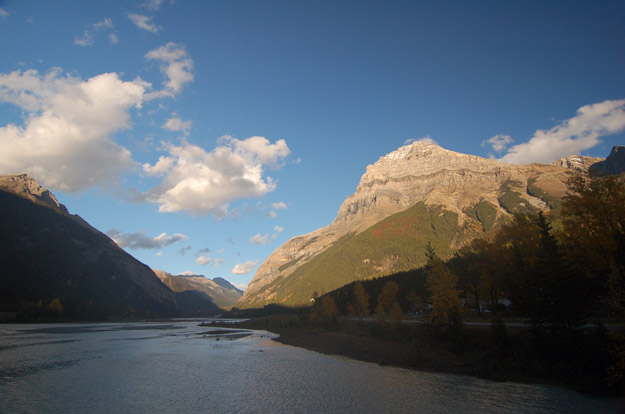
The community of Field can be found at the centre of Yoho National Park in the Canadian Rockies. Field is easily accessible from Calgary, Alberta and Banff National Park via the Trans-Canada Highway (HWY 1.) If you are traveling from Vancouver or the west coast of British Columbia, you can get to Field by heading east on the Trans-Canada Highway.
Field, BC: Past and Present
Field has developed into a tight-knit family community of fewer than 200 people from all corners of Canada, many of whom arrived in the area with skis in tow and couldn't bring themselves to leave. The village artisans, whether their medium is sound, clay, food, or film, have found Field to be the perfect place to hone their craft.

Life in a small mountain village builds unique friendships, a deep connection with the surroundings, and an appreciation for the simple rewards that the mountain lifestyle offers.
Though quite young, Field has seen steady change due to a range of influences.
The Birth of Field
An 1871 agreement to bring the province of British Columbia into the Confederation of Canada set the wheels in motion for the creation of the Field townsite. Crucial to the agreement was a commitment to expand railway access across the continent.

Established in the 1880s as a settlement of tents and shacks to house construction workers for the Canadian Pacific Railway, Field soon became a hotbed of activity in the Rocky Mountains. The townsite received its name in honour of Cyrus Field, an American being wooed by the CPR for investment capital; he never did invest. The CPR greatly influenced development in the area by building many of the hiking trails surrounding Field and erecting a variety of mountain hotels, chalets, and guide houses to attract the wealthy tourists who helped fund construction of the railway, which was completed in 1885. In order to stimulate tourism, experienced Swiss guides were hired to escort amateur mountaineers drawn to the thrill of ascending peaks that had previously been inaccessible.
William Cornelius Van Horne moved to protect a small area surrounding the Field townsite against development, and in 1886 the Mt. Stephen Dominion Reserve was established. The protected area was quickly expanded to preserve the natural magnificence bordering other CPR developments and renamed in 1901 to "Yoho", a Cree expression of awe and wonder.
Mount Stephen House
Mount Stephen House was built in 1886 by the CPR as a lavish hotel within wild surroundings. Railway travelers stopped in Field to dine so that the trains didn't have to tow heavy dining cars. Visitors to the area stayed in luxury in Field and at CPR-built lodges at Lake O'Hara, Emerald Lake, Wapta Lake, and in the Yoho Valley. World War I took its toll on the tourism industry, prompting the hotel to become a YMCA hostel. Mount Stephen House declined rapidly following the Great Depression, and was eventually torn down in 1963.
Use of the park was not exclusive to tourists. Early prospectors and railway workers recognized the value of the area's natural resources and moved quickly to file mining and logging claims. Only one of the mining claims panned out, and mining and logging rights were revoked completely in 1930.
The Spiral Tunnels Conquer The Big Hill
The completion of the railway was not without its problems. In a push to finish work quickly, the descent from the Kicking Horse Pass to the river valley was built on a slope with a steep grade of 4.5%, more than twice the maximum allowed according the CPR directives. Numerous runaway lines failed to prevent numerous derailments on the Big Hill, leading to many proposals to rework the line.

Construction on the Spiral Tunnels began in earnest in 1907, driving the trains through two loops deep inside the mountains and reducing the slope of the descent to 2.2%. The Spiral Tunnels are in use to this day, and easily accessible viewpoints are a popular destination for visitors to Yoho National Park.
Yoho National Park
The early recognition of Yoho as a magical place ensured that future visitors could experience the wilderness of the Rockies in their purest form. Field is the ideal place for outdoor adventure, mountain photography, and wildlife viewing.
| City | km | Miles |
|---|---|---|
| Calgary, Alberta | 211 | 130 |
| Banff, Alberta | 83 | 51 |
| Golden, BC | 55 | 34 |
| Jasper, Alberta | 258 | 160 |
| Lake Louise, Alberta | 27 | 17 |
| Radium Hot Springs, BC | 128 | 79 |
| Revelstoke, BC | 199 | 124 |
| Vancouver, BC | 832 | 523 |